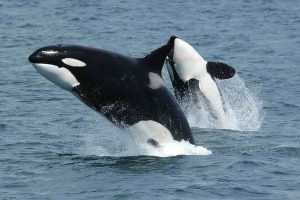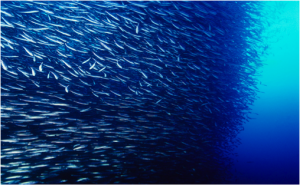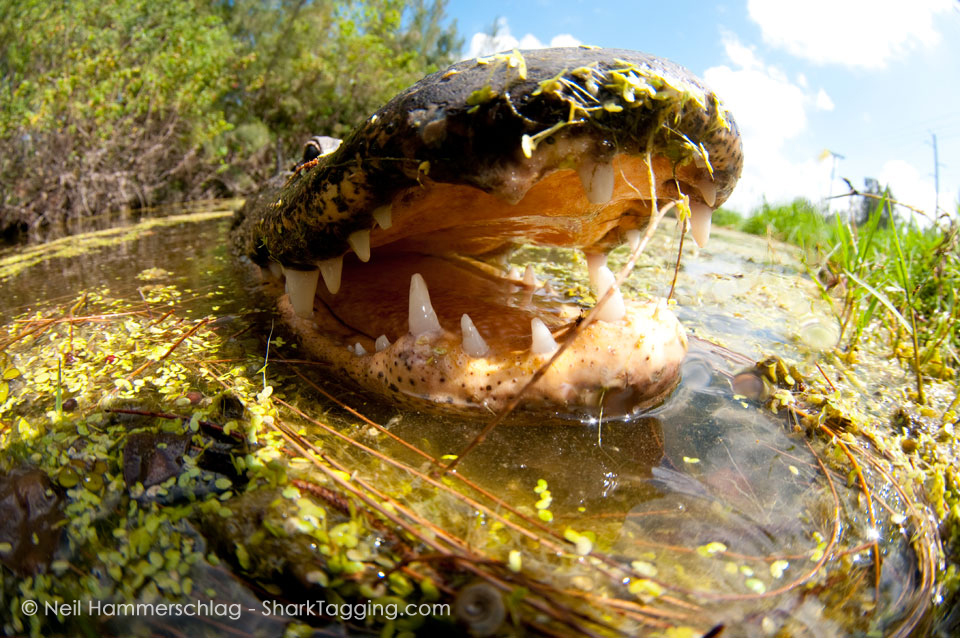Herring Perform Stronger Collective Evasive Reactions when Previously Exposed to Killer Whale Calls
By Shubham Mathur, SRC Intern
The ability of large schools of marine fish to react to predatory behaviors with high levels of coordination. Forming a school and synchronized swimming are used to reduce the risk on any individual, and to detect approaching threats.

Atlantic herring (Clupea harengus)
The Atlantic herring (Clupea harengus) is an example of a species that forms large schools. Like many species of small pelagic fish, the Atlantic herring is a vital source of prey for many larger marine species, including fish, sea birds, and even marine mammals, all utilizing different methods of predation. As hunting pressures are never constant, the little herring must adapt its predation evasion tactics to combat whatever form of predator is most prevalent at the time. One of the primary predators of the Atlantic herring in the Norwegian Sea, is the killer whale, or orca (Orcinus orca).

Two orcas (Orcinus orca) breaching
Highly vocal creatures, orcas coordinate groups to feed on the schools of herring. While it is known that orcas often use their calls to herd the schools of herring into tight formations to facilitate predation, it is not known if or how the Atlantic herring can make adjustments to schooling behavior to minimize the risk of orca predation. Testing the idea requires observing the fish in as realistic of a scenario as possible.

Large school of small pelagic fish
An approximately 14-tonne school of wild-caught herring was placed into a large sea cage used for aquaculture. The 12 by 12 by 12 meter cube was located at the Institute of Marine Research aquaculture facility in Austevoll, Norway. In this set up, orca calls were played via underwater speaker for the fish in the cage. Additionally, a black predator model was built and pulled across the cage below the surface.
After the experiment was completed, it was concluded that while the school of Atlantic herring did not modify their school structure as a response to orca calls alone, they did perform a stronger collective escape response when the fish had been exposed to the vocalizations. While it was previously thought that the structure and organization of a school of wild pelagic fish was organized based on predator evasion tactics, in this case this was not found to be the case, and that the greatest behavioral change was found in the escape response of the school during a predatory event.
References
Durban, By John. “National Marine Mammal Laboratory (NMML).”Quarterly Research Reports for National Marine Mammal Lab, April-June 2005. N.p., n.d. Web. 20 Oct. 2016.
By Gervais et Boulart – Les poissons Gervais, H., Public Domain,
Durban, By John. “National Marine Mammal Laboratory (NMML).”Quarterly Research Reports for National Marine Mammal Lab, April-June 2005. N.p., n.d. Web. 20 Oct. 2016.
By OpenStax College – [1], CC BY-SA 3.0,

